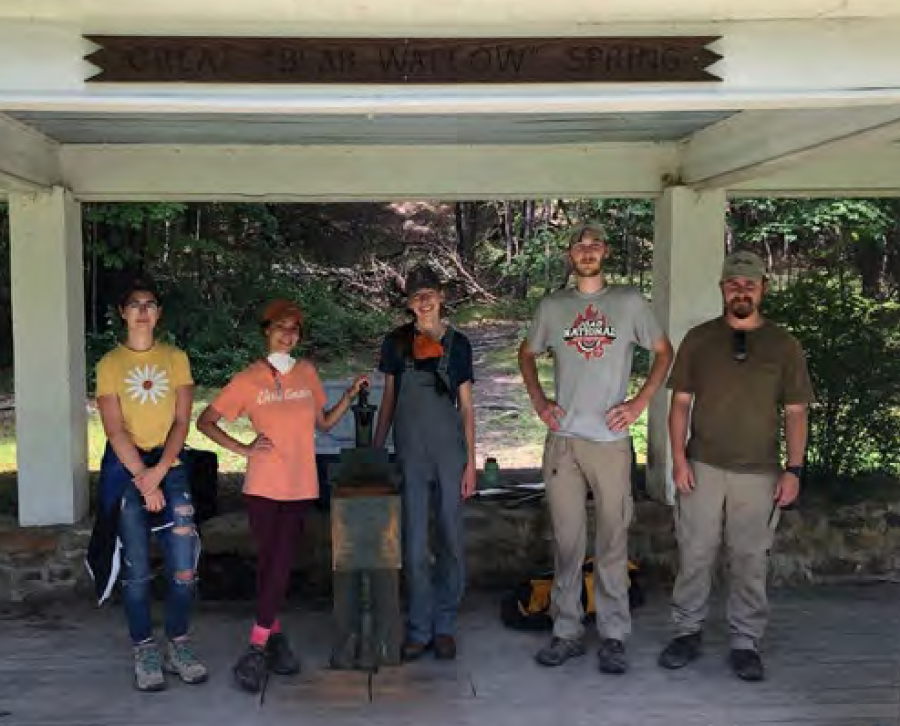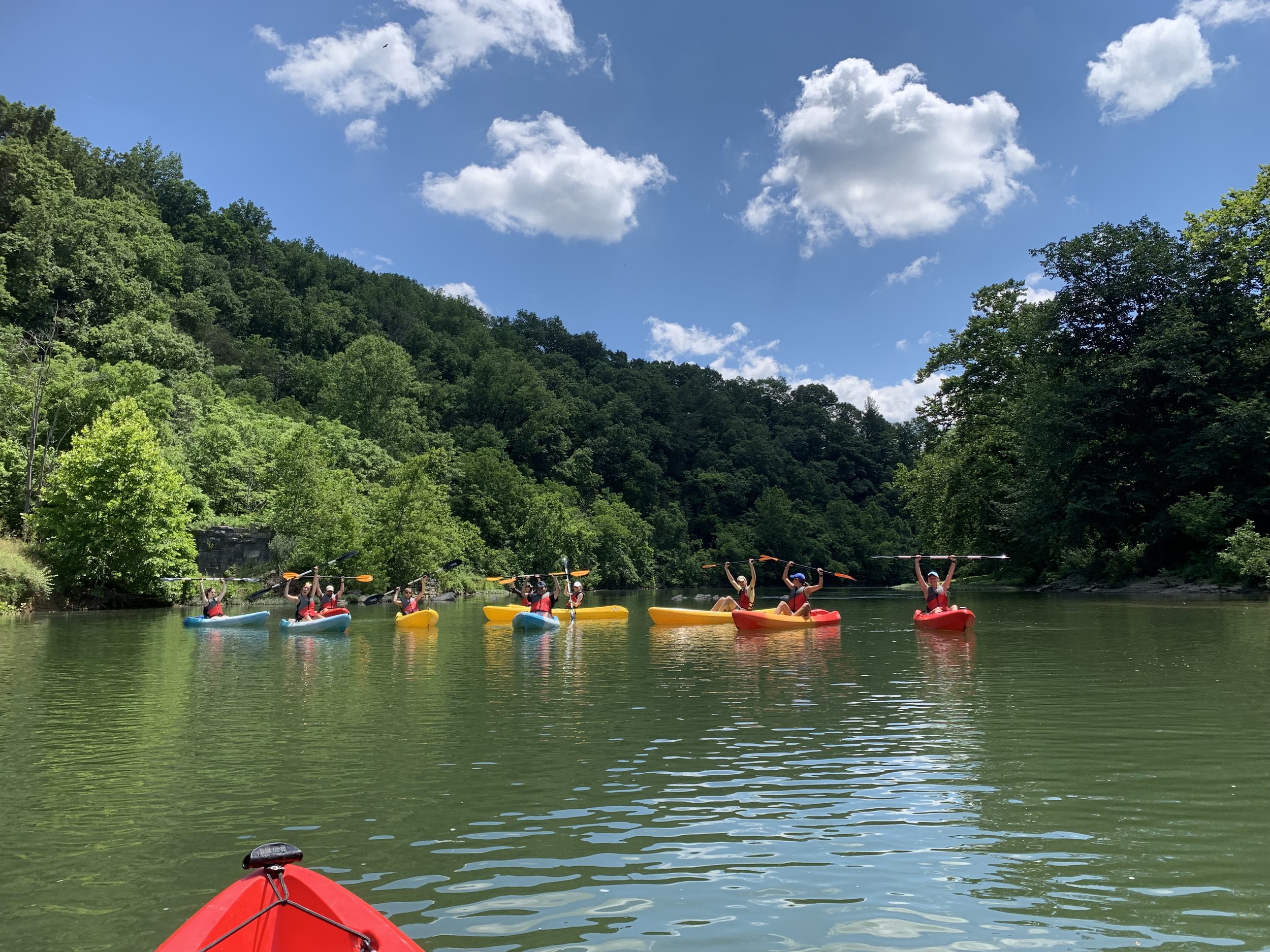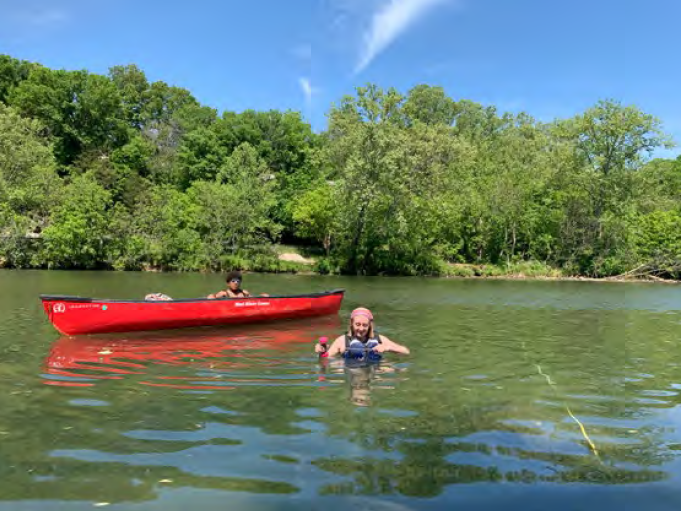This summer, we had the amazing opportunity to work with Professor Hinkle on a geochemistry project to help mitigate metal contamination in coal mine drainage. Coal Mine Drainage (CMD) is runoff from abandoned coal mines that enters watersheds and contaminates them with metals that are difficult to remediate like Mn. This is a pervasive issue across Appalachia where there are thousands of abandoned coal mines that pollute watersheds and contaminate human drinking water. Current treatments for Mn remediation from CMD are kinetically unfavorable and leave significant amounts of Mn(II) in solution. This research aims to find a fast and long-term solution to Mn contamination from CMD through the use of Mn-oxidizing microbes and liner rocks like limestone and zeolites. To be more specific, our project examines improvements to current coal mine drainage (CMD) passive bioremediation systems. We are exploring the impacts of increased acidity, competitive sorption of copper, and different ratios of limestone and zeolite liner rocks impact the Mn(II) remediation from CMD.
Last summer, we analyzed systems of fungi and limestone and fungi and zeolites respectively and determined that a myco-zeolite system could remove over 95% of Mn(II) from solution in just 24 hours. The fungal-limestone system removed just 11% of Mn(II) in the same amount of time but removed over 99% of Mn(II) by the conclusion of the 16-day experiments. Building upon that work, this summer, we created systems with both limestone and zeolites in varying ratios, hoping to combine the catalytic properties of zeolites with the effectiveness of limestone to arrive at the ideal bioremediation system for Mn from CMD.
Another side of this summer research project is to study how changes in pH and copper concentrations could impact the fungi and liner rocks’ ability to oxidize and remediate Mn from the solution. We hypothesize that increased acidity level and copper concentration can undermine our Mn bioremediation system. Acidity can impact our remediation processes because fungi thrive in neutral to alkaline environments so if we create an environment with a lower pH, fungal growth will be hampered and the remediation of soluble Mn(II) could be slowed down. Increased copper concentration, on the other hand, affect our remediation systems because liner rocks preferentially bind to copper instead of Mn so we hypothesize that as more copper is added into our system, the already oxidized Mn would be released back into the solution as copper would be bound to the rocks instead. If these two hypotheses are supported, further research should be done on how to make up for these systematic disadvantages to guarantee maximal effectiveness of our Mn bioremediation systems.
An essential skill set we acquired from this work is the use of sterile techniques. To ensure that all microbial processes were the result of our oxidizing microbes and not affected by unwanted bacteria (especially Mn-oxidizing bacteria), systems and materials had to be sterile at all times. These skills were not only useful for future lab work but also helped enhance our attention to detail. We also utilized techniques like Scanning Electron Microscopy paired with Energy Dispersive X-ray Spectroscopy, or SEM-EDS, to determine the composition and analyze the structure of our liner rocks and fungi. We additionally prepared samples for Ion Chromatography (IC) to track the anions and cations present and Inductively Coupled Plasma Mass Spectroscopy (ICP-MS) to track levels of trace metal contaminants in our systems. These techniques allowed us to gain valuable experience in sample preparation and analysis and conduct meaningful and in-depth analysis of our data and support our hypothesis.
Beside lab techniques, we also got to learn how to read and analyze scientific papers to write an abstract according to the specific guidelines of the Geological Society of America (GSA). During the 10-week research process, we learned to use Box, Excel, Excel Online to store, backup and manipulate data and create graphs necessary for our GSA poster. As we have over 50 samples in total, each with 20 data entries for 16 days, we needed to figure out a consistent naming and graphic aesthetics scheme for both sub-experiments. Through this process, we understood how even the smallest detail such as the shape of the marker for each line on the graph must be consistent in order to make a good scientific poster. As far as the writing up of the results and discussion sections, we were able to get started with it during Week 10 and will be able to work during the Fall Term to finish it up before the GSA conference in October!
















